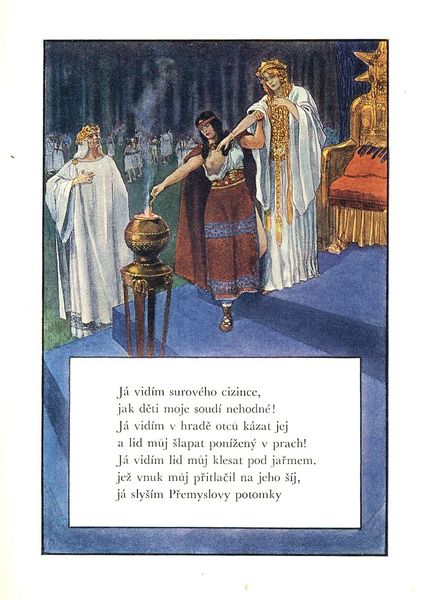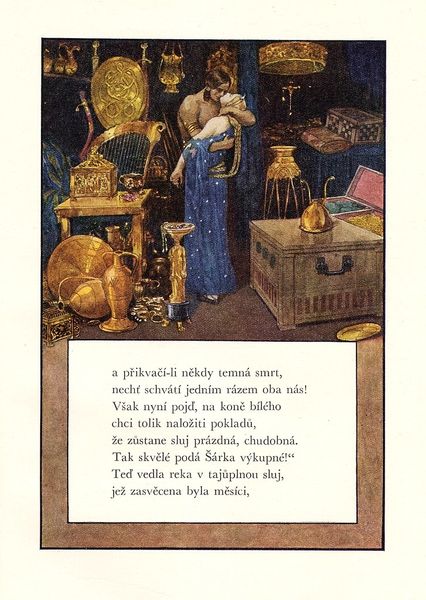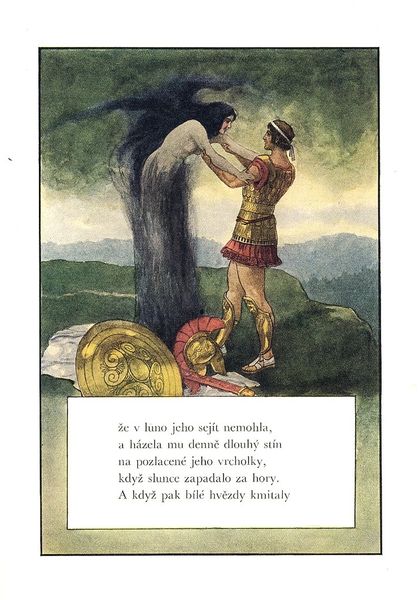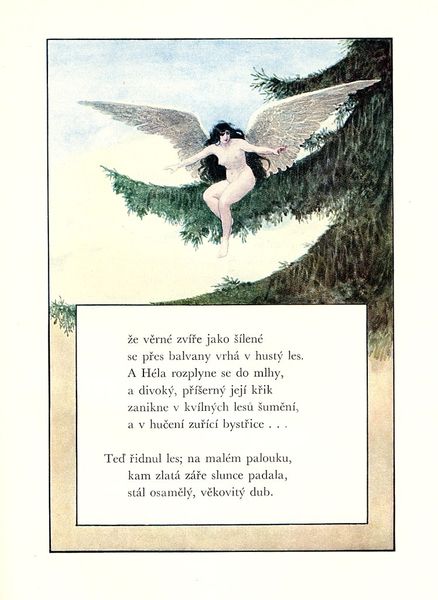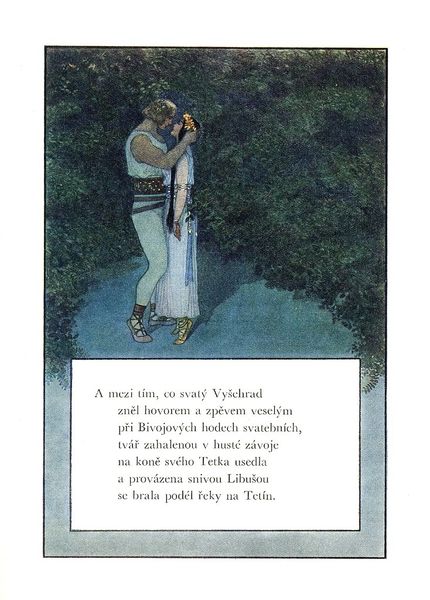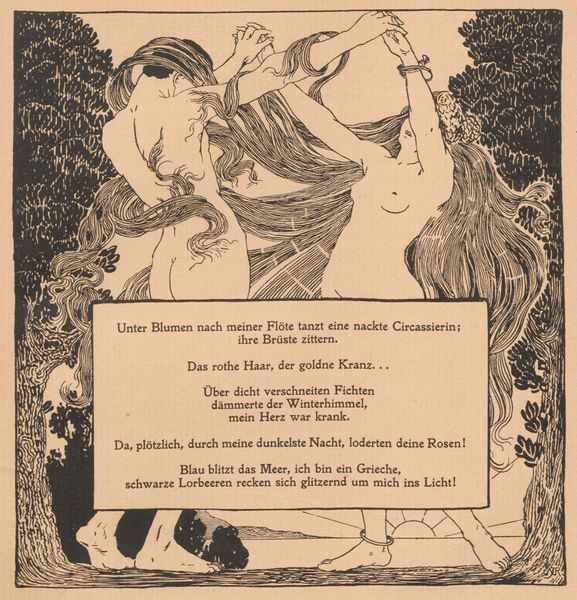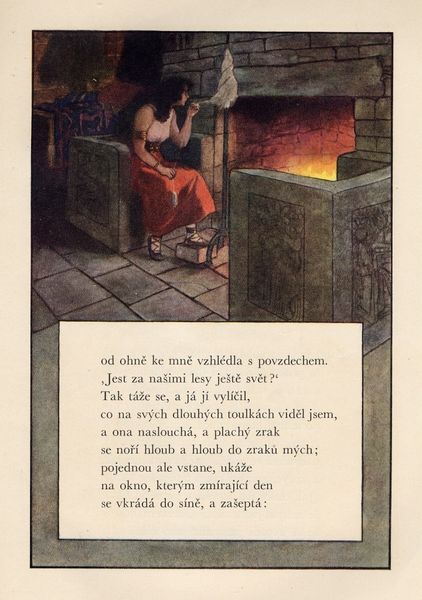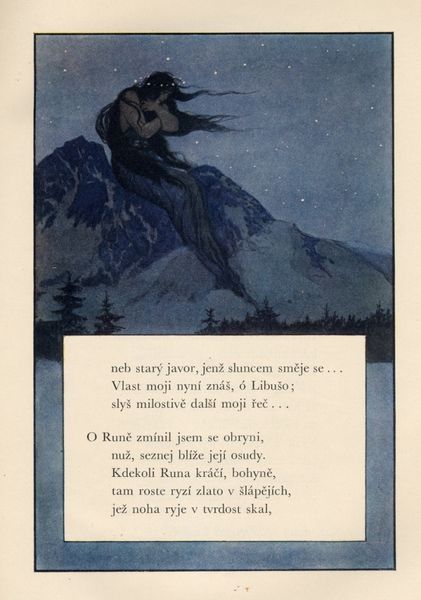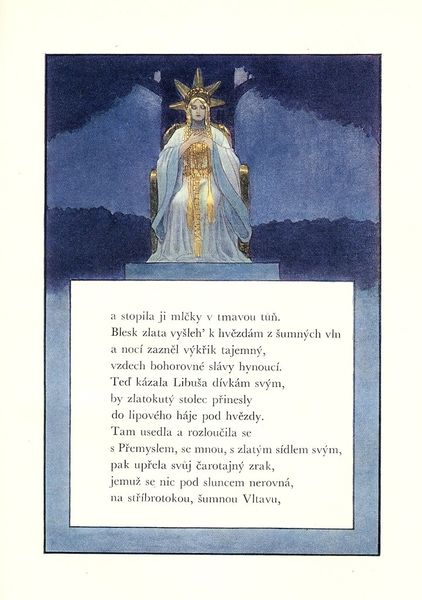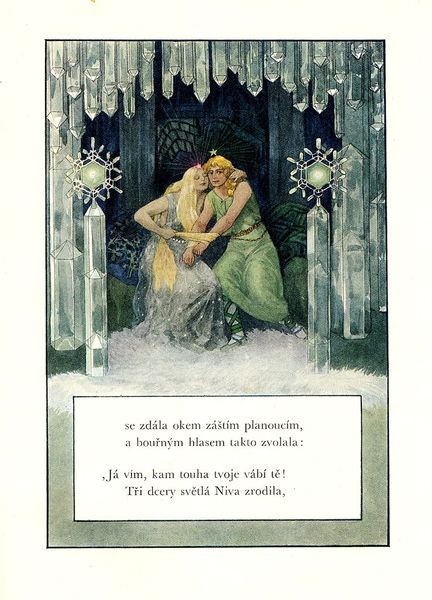
painting
#
art-nouveau
#
painting
#
landscape
#
holy-places
#
figuration
#
text
#
symbolism
Copyright: Public domain
Curator: Arriving now at an illustration of Vyšehrad, a historical fort in Prague, by Artuš Scheiner. Notice anything that calls to you right away? Editor: My eyes are drawn upwards, definitely. It’s dreamlike, almost suspended, that woman reclining on the balcony, gazing at the stars. There's something so ethereal in her upward gaze, a real romantic longing. It looks like an illustration for a fairy tale, like a stage set. How was it created, this piece? Curator: Well, Scheiner worked primarily in painting, embracing both Art Nouveau and Symbolism in his practice. You see this mix in the composition here, it looks like it’s a combination of paint, overlaid onto a page with printed text underneath. What I think is interesting here, is the relationship of the literary scene, with its text describing rituals in holy places, with its presentation. What materials are highlighted to give an impression of ritual or religion here? Editor: It’s the tension of darkness, especially around her clothes and behind the architectural construction, against the soft lighting of the figures. There's this emphasis on rich, dark fabrics that signals luxury but the hard boundaries of stone and concrete of the holy site also set the parameters and constrain this more unruly darkness of fabric and body. Is this how she gains her knowledge, that connection between earth and body? Curator: The title and poem certainly position her as connected to place and insight! Looking at this illustration within its potential original publication context tells a more material story. The labor, the act of constructing an image through artisanal reproduction, for general consumption—and what does that contrast with, here? The idea of individual spiritual revelation perhaps. How fascinating that there's no definite date attached to it! Do you find that strange, in any way? Editor: Not at all, as it really detaches it from a particular time and almost intensifies the focus on craft rather than the specificities of when the text was constructed. Perhaps that intensifies this overall sense of longing for transcendence; the materials, and methods used for this creation tell the story more vividly than any fixed time could convey. It makes me think of the many unseen hands that went into making even an illustration like this possible. It all feeds into the symbolism. Curator: Absolutely, the labor embedded within makes you consider its place in history more vividly.
Comments
No comments
Be the first to comment and join the conversation on the ultimate creative platform.
